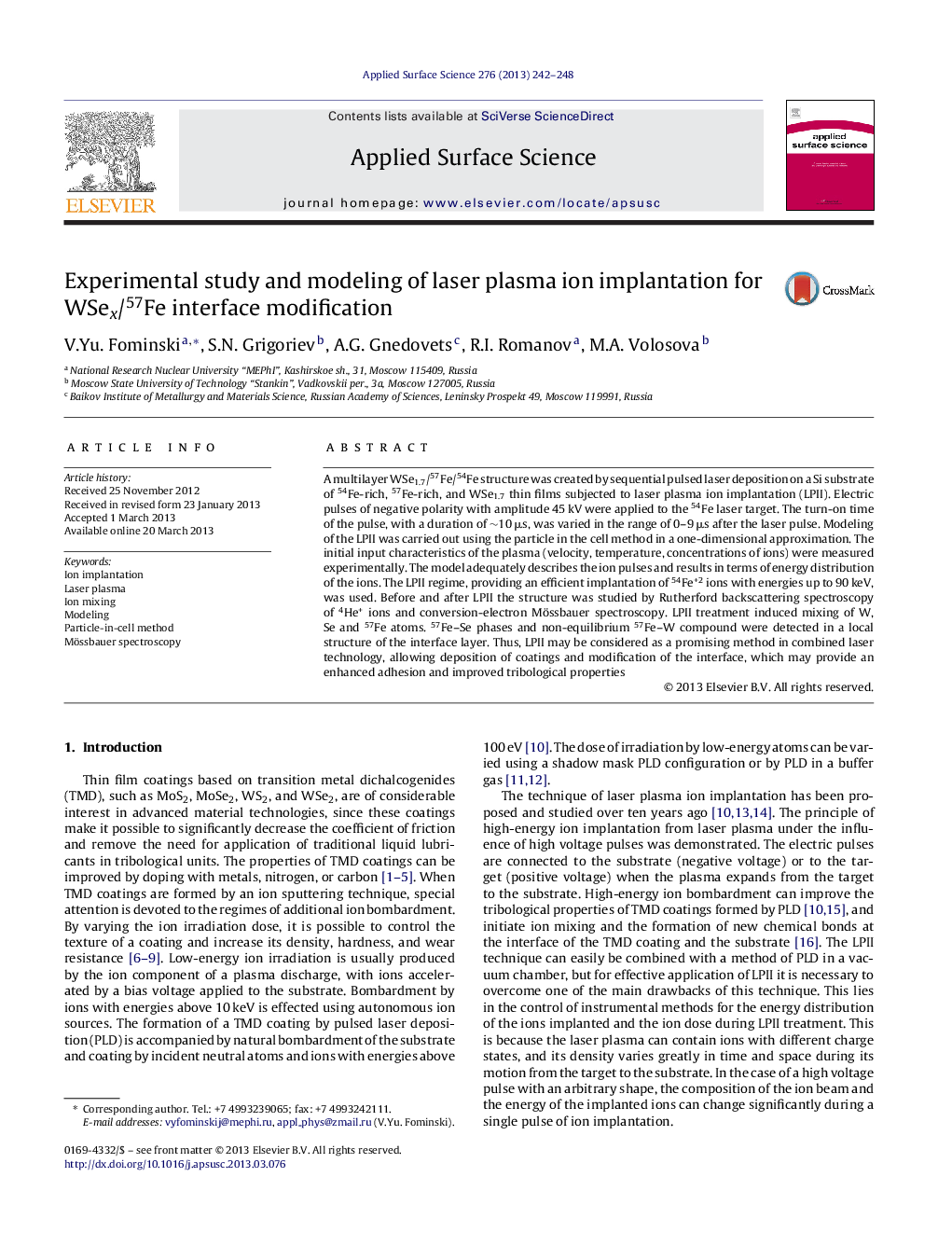| Article ID | Journal | Published Year | Pages | File Type |
|---|---|---|---|---|
| 5360074 | Applied Surface Science | 2013 | 7 Pages |
Abstract
A multilayer WSe1.7/57Fe/54Fe structure was created by sequential pulsed laser deposition on a Si substrate of 54Fe-rich, 57Fe-rich, and WSe1.7 thin films subjected to laser plasma ion implantation (LPII). Electric pulses of negative polarity with amplitude 45 kV were applied to the 54Fe laser target. The turn-on time of the pulse, with a duration of ~10 μs, was varied in the range of 0-9 μs after the laser pulse. Modeling of the LPII was carried out using the particle in the cell method in a one-dimensional approximation. The initial input characteristics of the plasma (velocity, temperature, concentrations of ions) were measured experimentally. The model adequately describes the ion pulses and results in terms of energy distribution of the ions. The LPII regime, providing an efficient implantation of 54Fe+2 ions with energies up to 90 keV, was used. Before and after LPII the structure was studied by Rutherford backscattering spectroscopy of 4He+ ions and conversion-electron Mössbauer spectroscopy. LPII treatment induced mixing of W, Se and 57Fe atoms. 57Fe-Se phases and non-equilibrium 57Fe-W compound were detected in a local structure of the interface layer. Thus, LPII may be considered as a promising method in combined laser technology, allowing deposition of coatings and modification of the interface, which may provide an enhanced adhesion and improved tribological properties
Keywords
Related Topics
Physical Sciences and Engineering
Chemistry
Physical and Theoretical Chemistry
Authors
V.Yu. Fominski, S.N. Grigoriev, A.G. Gnedovets, R.I. Romanov, M.A. Volosova,
